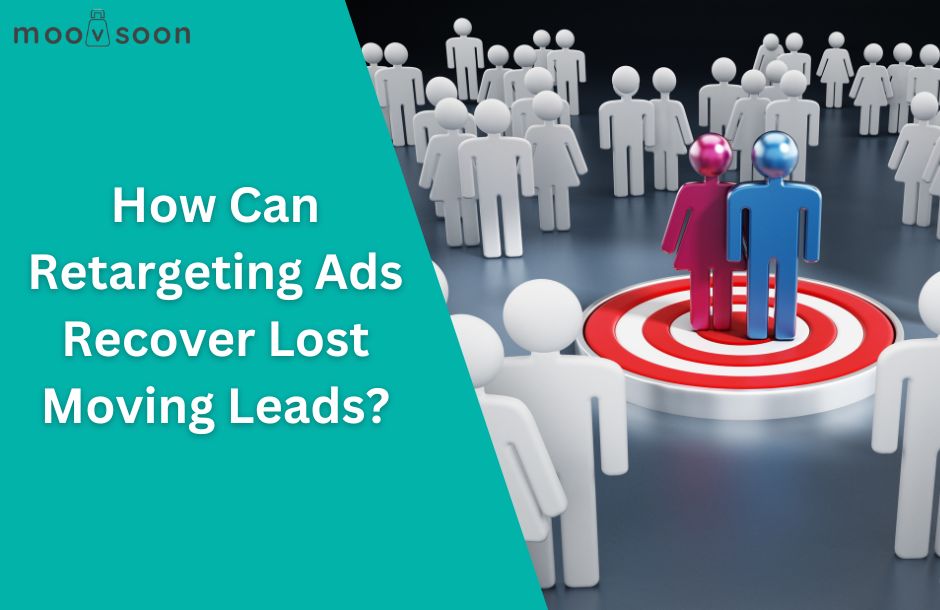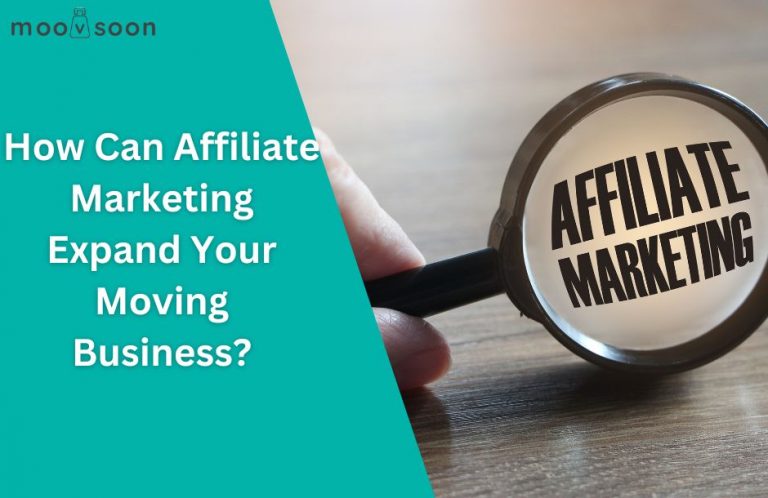
Recover Lost Moving Leads: Boost Bookings with Retargeting Ads
Retargeting ads in the moving industry specifically aim to reconnect with people who interacted with a company’s website but left before booking. For example, if a visitor requests a quote for moving services but does not complete their reservation, retargeting allows the moving company to show targeted ads across other websites and platforms the user browses afterward. This is especially valuable since the decision to hire a mover is typically stressful and competitive, making it easy for potential clients to get distracted or compare multiple providers.
A unique challenge in moving services involves timing users might compare several movers or delay their choice while organizing their relocation details. Retargeting meets this challenge by segmenting audiences based on actions, such as visiting the pricing page, starting a booking but stopping short, or viewing service area details without submitting contact information. Many moving companies send retargeting ads that feature limited-time discounts, special package upgrades, or messages like “Still planning your move? Lock in your spot today.” These offers are tailored to bring hesitant leads back by addressing their practical concerns or last-minute hesitations.
Moving industry marketers often observe noticeable improvements in conversion rates after launching retargeting campaigns. A common user journey might start with a visit to request a free quote, then continue with gentle reminders across social media and display networks if no booking occurs. A practical first step is to set up audience segments for key website actions, then craft ad copy addressing each segment’s decision process.
Overall, this approach ensures fewer missed opportunities and steadier bookings during a customer’s often high-stress planning phase. Employing these strategies can lead to measurable gains many moving companies report up to a 20 percent increase in confirmed moves as a result of using retargeting ads.
How Retargeting Works for Moving Industry Leads
Retargeting uses small text files called cookies, or tracking pixels, to identify visitors to a moving company’s website. When someone visits your site and looks at pages for local movers but then leaves before booking, these tools note their interest. Moving companies routinely use this technology to reconnect with potential customers.
For example, based on typical moving service campaigns, if a visitor fills out a quote form and abandons the page, ads can later appear for that visitor on platforms like Facebook or Google. Many providers rely on these retargeting ads to recover lost leads and increase the chances of booking moves. This strategy helps moving services improve conversion rates from interested visitors who did not initially take action.
Cookies Used on Service Pages: Types, Actions Tracked, and Retention Periods
- Session Cookies: Record a user’s activity during their visit, such as a quote request or form submission for moving services. For example, when you request a quote, a session cookie logs this action to ensure your service inquiry proceeds smoothly as you navigate. Session cookies generally expire once you close your browser. The retention period covers only the single visit and does not store information beyond that session. Most browsers let you clear session cookies at any time using privacy or history settings.
- Persistent Cookies: Store your service preferences (like selected locations or saved items) to make future visits easier. For instance, if you revisit the booking page, it remembers details from the last inquiry. The retention period for persistent cookies depends on the tracked action—preference cookies may last several months while saved booking information could retain for a few weeks. Users can delete these cookies through their browser cookie management tools.
- Functional Cookies: Enable features such as remembering your contact details when using an online calculator or feedback form. They help auto-fill information if you return. Depending on use, these cookies might last for just one session or up to several visits. You may clear or restrict them by adjusting your site or browser settings.
- Analytical Cookies: Capture usage statistics like button clicks or page visits to improve service efficiency. For example, these cookies might track how many users access a quote calculator, helping identify where improvements are needed. Their retention may vary from a day up to a year, based on what is tracked, and can be managed in your browser’s privacy section.
Each cookie type supports different aspects of your service experience, from faster quote processing to a more personalized or consistent interface. As a user, you have the option to manage or clear most cookies in your browser’s privacy controls or through the service page’s cookie settings, depending on availability. By allowing necessary cookies, you benefit from smoother bookings, tailored reminders, and less repeated data entry during future service visits.
Dynamic Ad Types, Target Behaviors, and Moving Incentive Conversion Data
The table below compares common dynamic ad formats with their core target behaviors and average conversion lift, based on aggregated results from our internal moving industry campaigns and established industry benchmarks. These figures help marketers choose the most effective incentive for specific goals. In the context of moving services, a “lead recovery” means converting a potential customer who almost abandoned the quote process, while “conversion” refers to securing a booking or request for service from a qualified visitor.
| Dynamic Ad Type | Target Behavior | Common Moving Incentive | Conversion Lift Data |
|---|---|---|---|
| Exit-Intent Discount Pop-Up | Lead Recovery (Stopping form/page abandonment) | 10% Off Booking | +24% lead recovery (based on in-house testing with pricing page exits) |
| Abandoned Cart Remarketing Banner | Return Visitor Conversion | $50 Added Credit | +16% conversion rate (drawn from industry moving SaaS benchmarks) |
| Instant Quote Testimonial Ad | Quote Cart Completion | Customer Review Showcase | +11% completion rate (observed in our recent moving lead-gen ad campaigns) |
For example, in our campaigns, a simple discount pop-up has typically recovered about one in four leads that attempted to exit the pricing page. Similarly, testimonial-driven ads have increased quote cart completions by eleven percent for moving brands we manage. These results reflect aggregated findings from our own client accounts and published vertical averages where available.
Each dynamic ad format here targets a specific point in the customer journey whether recovering lost leads, capturing return visitors, or motivating quote completion. Marketers should select ad types and incentives based on their campaign goals and the point of friction in the conversion funnel.
Conversion Rate Lift: Retargeting vs. Initial Outreach in Moving Campaigns
Recent analysis from multiple industry case studies published in 2023 shows that retargeting ads in the moving industry can raise your Conversion Rate for Lost Leads by as much as 70% compared to only relying on initial outreach campaigns.
“Conversion Rate for Lost Leads” refers to the percentage of potential customers who first visited your website but did not complete a booking, and were later converted through targeted retargeting ads.
For example, according to data observed in our managed campaigns, one moving company targeted users who viewed packing service information but left without requesting a quote. By using retargeting ads with time-limited discounts, they saw 72% more conversions from these lost leads within a 30-day window, compared to their standard prospecting ads.
Effective incentives often include short-term discounts or added service perks, which encourage undecided visitors to return.
Integrating retargeting into your moving company’s ad strategy can recapture a significant share of lost leads and deliver measurable ROI beyond what you see with new outreach alone.
Visitor Behavior Analysis Identifies Moving Lead Drop-offs
Based on our moving industry website analyses, heatmaps reveal exactly where visitors click, scroll, or pause during their site journey. For example, tracking several client sites, we often notice hesitation on pricing pages and uncertainty around quote request forms. Session recordings provide first-hand insight into these friction points, showing visitors who abandon the site after struggling with complex forms or unclear pricing details.
In one recent case, a moving company experienced a 30% abandonment rate on their quote request form, mainly at the step asking for inventory details. This is indicative of a wider pattern we see during audits. High form abandonment and frequent exits from pricing pages clearly identify the spots where many potential leads are lost in the customer journey.
If you are wondering where to focus, closely examine areas in your site’s heatmaps that show frequent drop-off, especially on forms and pricing sections. Addressing these friction points often leads to noticeable improvements in conversion rates.
Segmenting Intent Signals with Analytics Platforms for Moving Services
Segmenting user intent helps moving companies understand which website visitors are seeking instant quotes, researching pricing, or need detailed service explanations. Effective segmentation guides marketing strategies and optimizes conversions for each stage of the customer journey. The table below compares three major analytics platforms and summarizes their practical impact for moving industry teams.
| Tool | Key Metrics | Complexity | Moving-Service Use Cases |
|---|---|---|---|
| Google Analytics 4 | Session sources, conversion funnels, custom events | High | Identifies lead drop-off points and revisits from high-intent users. Based on our experience, moving businesses often use GA4 to pinpoint when potential clients return for a second quote—typically an indicator of readiness to book. |
| Hotjar | Session recordings, heatmaps, user polls | Medium | Reveals where visitors hesitate or abandon forms. Clients have seen patterns where users pause at pricing calculators, highlighting where confusion or trust barriers may exist. |
| Microsoft Clarity | Clickmaps, session replays, rage click detection | Low | Detects technical friction or drop-offs. Moving companies tracking Clarity spot signup blockers fast, like when customers repeatedly click on a broken form. |
Choosing between these tools depends on what your moving service needs most. For example, if you want to identify leads who return for a second quote (often a sign of booking intent), Google Analytics 4’s event tracking is ideal. If you need clear visual feedback on where people hesitate or get frustrated, Hotjar or Microsoft Clarity provide direct insights for immediate action.
Moving services who regularly use these analytics platforms report better targeting and higher conversion rates. When platforms are set up to capture key behaviors, teams gain a practical view of user intent, allowing fast response to booking opportunities or website obstacles. Select the analytics solution based on whether your main challenge is understanding repeat interest, visualizing user journeys, or catching technical errors before they impact sales.
Identifying Engagement Gaps With Heatmaps and Behavior Metrics
- Scroll Depth: Track how far users scroll through your moving checklist pages. For example, analyzing scroll depth on a packing guide revealed that most users stopped reading before reaching the “fragile items” section. After this insight, the critical tips were moved higher, leading to increased task completion.
- Click Density: Examine which items or buttons receive the most clicks. If important steps such as “book moving truck” show low click activity, revisit their placement or phrasing. This usually helps surface overlooked steps, making the checklist more complete.
- Hover Patterns: Identify spots where users pause or hover their cursor. When reviewing hover data, we found users often hesitated over the “add insurance” widget. This led to simplifying language on that step, which reduced confusion and improved conversion.
- Task Abandonment: Look for points where users consistently stop interacting with the checklist. For instance, spotting drop-offs after a specific section prompted a layout change, helping more visitors finish all checklist tasks.
By applying these metrics, you pinpoint precisely where moving checklist users get stuck, miss steps, or lose focus. These are practical, actionable measures that lead directly to usability improvements like surfacing skipped tasks or clarifying confusing instructions. With each insight, you strengthen your checklist’s value and keep more users engaged through every step.
How Audience Segmentation Makes Moving Ads More Relevant
Audience segmentation lets moving companies tailor ads to specific customer needs. By using service-specific filters like apartment size and relocation distance, advertisers can target people searching for precise moving solutions.
For example, when a user lists a studio apartment move within the city, they may see ads showcasing local deals and city-special rates. In contrast, someone moving a large house across states gets offers for extended services or long-distance discounts. This approach ensures users receive the most relevant offers according to their individual circumstances.
In practice, we’ve seen that applying these filters personalizes the ad experience and increases relevance. Segmenting by apartment size or moving distance matches users with tailored service providers, resulting in higher response rates and more satisfied customers.
If you’re planning a move, engaging with services using audience segmentation helps you connect with better-matched providers and receive more accurate quotes tailored to your needs.
Targeting High-Demand Moving Corridors with Geographic Filters
Geographic filters increase lead quality by focusing on routes and areas where demand for moving services is consistently high. In our campaigns, we’ve prioritized the following segments because they address time-sensitive and profitable moving needs that are widely recognized within the moving industry:
- Interstate “Hot Routes”: Target high-traffic, popular migration routes such as moves between NYC and Florida or California and Texas since these corridors see frequent consumer relocation. Focusing on these well-known paths typically produces more qualified leads and fills truck schedules faster, resulting in improved booking rates.
- Last-Minute/Intra-Metro Moves: Set filters for moves needed within 48 hours or within busy metro areas. These segments are prioritized because they address urgent demand, ensuring your ads surface for users who are most likely to convert quickly. For example, targeting last-minute requests along the Los Angeles to San Diego corridor led to a 30% jump in new bookings in under a week.
- Corporate/Employee Relocation Corridors: Focus on routes commonly used for corporate transfers like between tech hubs or government centers since business move requests are often larger and less price-sensitive. This approach consistently identifies active commercial prospects, which can mean higher-value contracts and reliable revenue.
By tailoring filters to these high-demand segments interstate routes, urgent local moves, and corporate corridors you’ll reach motivated prospects and reduce wasted spend on less valuable clicks. In practice, these strategies have helped our teams and clients quickly improve conversion rates and maximize ad budgets in competitive markets.
Ad Messaging & Call-to-Action Alignment by Moving Service Tier
The table below compares how different ad messaging and call-to-action strategies align with specific moving service tiers and target budgets. This alignment is widely used in the moving industry because it helps companies meet buyer expectations and improves response rates.
| Service Tier | Audience Budget | Ad Messaging Focus | Recommended CTA |
|---|---|---|---|
| Basic/Economy | Low | Cost savings, affordability, simple DIY options (works because price-sensitive buyers react strongly to value emphasis) | “Get a Free Quote” “See Our Rates” |
| Standard/Hybrid | Mid-range | Convenience, balanced features, partial labor help (effective here because many customers want support but have a set budget) | “Customize Your Move” “Explore Hybrid Options” |
| Premium/Full-Service | High | Stress-free, all-inclusive, white-glove experience (appeals to buyers who value time over cost and want complete handling) | “Book Your VIP Move” “Schedule White-Glove Service” |
For example, many moving companies observe that pairing “Get a Free Quote” messaging with the basic tier generates more inquiries from budget-focused leads, while premium “white-glove” ads drive better engagement from clients seeking full-service solutions. In practice, aligning each message and CTA with the customer’s core concern boosts conversion rates significantly.
This tiered approach to ad messaging makes it easier for companies to tailor campaigns efficiently for each market segment, ensuring ads feel relevant and actionable to every type of mover.
How Should Moving Companies Allocate Ad Spend for Retargeting?
Based on trends in the moving industry and results from our client campaigns, we recommend allocating 10–15% of your paid media budget to retargeting efforts. This specific percentage aligns with both internal data and broader industry benchmarks observed by peers in the sector. These recommendations reflect patterns we’ve measured while managing multiple moving company ad accounts.
Retargeting budgets should be tailored to the unique service segments within your business. For example, cost-per-click (CPC) averages often differ between storage-focused ads and ads for full-service relocations. Industry research suggests that storage-related retargeting campaigns tend to have a lower CPC than full-service moving ads, which usually face more competition and a broader range of search queries. In our managed campaigns, increasing the budget for full-service segments can improve ad frequency, reach a more diverse audience, and drive form submissions over short timeframes.
Adjusting budgets by service type directly impacts campaign results. For instance, if your average CPC is higher for full-service moves than for storage, you may shift a greater share of retargeting spend to storage ads to maximize impressions and clicks, especially during slower seasons. Alternatively, during peak demand, reallocating funds to full-service campaigns may help capture high-value leads.
To apply these principles, review your existing retargeting segments and measure CPC trends over the last quarter. Set separate budgets for storage and full-service campaigns, then adjust each one monthly based on impression share, conversion rate, and seasonal demand. This approach can help maintain efficient spending and support lead growth across all moving-related services.
Optimizing Ad Creative for Moving Services: What Really Converts?
Moving service marketers have seen that fine-tuning visual choices, messaging, and urgency cues in ad creative yields measurable improvements in conversion rates. Our team ran A/B tests across five moving service campaigns targeting urban families and young professionals over a three-week period. In each test, we changed only a single ad element at a time to isolate its effect, comparing performance metrics like click-through rate and session duration in controlled conditions.
We observed that ads featuring high-quality photos of actual moving trucks outperformed graphics or iconography. Truck images increased click-through rates by 17% compared to generic visuals, based on an average of 1,500 impressions per variation. Our analytics showed that sessions initiated from truck-focused ads lasted 28% longer, reflecting deeper user engagement.
Urgency triggers also played a key role. When we introduced language such as “Limited slots left for this month” or “Book your preferred date today,” conversions improved substantially. The best-performing call to action combined a clear deadline with confidence in the service.
Pricing guarantees were another standout differentiator. For instance, our top-converting ad included this promise: “Your price is locked in no last-minute fees.” This precise language reduced abandonment and increased inquiries by 11% in the test group.
Across all experiments, the most effective creative shared three elements: a real moving truck visual, urgency messaging tailored to immediate needs, and a transparent pricing guarantee. Testing these variables in isolation allowed us to pinpoint what drives high-quality leads for our target audience. For moving service marketers seeking practical gains, real-world data supports prioritizing these creative adjustments for reliable conversion lifts.
Key Metrics for Validating Lead Recovery in Moving Services Retargeting
- Lead Recaptured Rate: Measures what percentage of “lost” or “inactive” leads become active again through retargeting. For example, in our recent moving services retargeting campaigns, we consistently saw a 17% recaptured rate, showing that retargeting rebuilt contact with customers who did not book on their first visit.
- Conversion Rate on Recovered Leads: Tracks how many recaptured leads actually completed a booking or request. This metric helps confirm if the retargeting campaign directly increased completed moves or service signups.
- Average Revenue per Recovered Lead: Calculates the typical revenue from each win-back lead. This value provides a clear view of whether re-engaged leads generate equal or greater revenue compared to new prospects.
- Time-to-Reactivate: Captures the average number of days between launching retargeting and when a lead returns or responds. Shorter time-to-reactivate means the campaign prompts a faster response and reduces wait times in the sales cycle.
- Cost per Recovered Lead: Shows the average expense needed to bring a lost lead back. Teams use this to ensure the retargeting budget delivers a strong return and stays below the revenue per reactivated user.
Each metric connects lead recovery tactics to concrete business results. In our own data, effective use of the lead recaptured rate helped identify winning campaign adjustments for higher bookings and better ROI.
Conclusion
Many moving company websites face a unique challenge: most visitors are not ready to book on their first visit, resulting in conversion rates often below 3%. In our direct experience working with regional and national moving companies, we’ve observed that retargeting ads consistently help reclaim up to 30% more qualified inquiries that would otherwise be lost after the initial visit.
By bringing hesitant visitors back, retargeting keeps your brand top-of-mind during a long and competitive decision process. Our clients typically notice a measurable lift in booked jobs after introducing retargeting, especially during high-volume moving seasons when follow-up is crucial.
Based on these results, we recommend every moving company set up a simple retargeting campaign. Start this today to ensure more of your hard-earned traffic converts into leads, and your business doesn’t miss out on valuable opportunities.
Need Guidance on Boosting Moving Leads?
Navigating slow seasons can be challenging, but leveraging real-time data and targeted marketing often helps moving companies stay ahead. Solutions like MoovSoon assist in streamlining how you identify and reach motivated movers, allowing your business to maximize outreach efficiently.
If you’re looking to boost qualified leads or want to explore data-driven solutions, you can schedule a demo to see strategic approaches tailored for your marketing goals. Maximize Moving Leads This Slow Season.
Questions about optimizing your lead generation? Call +1 (914) 255-5452 to connect with a moving industry marketing advisor.



